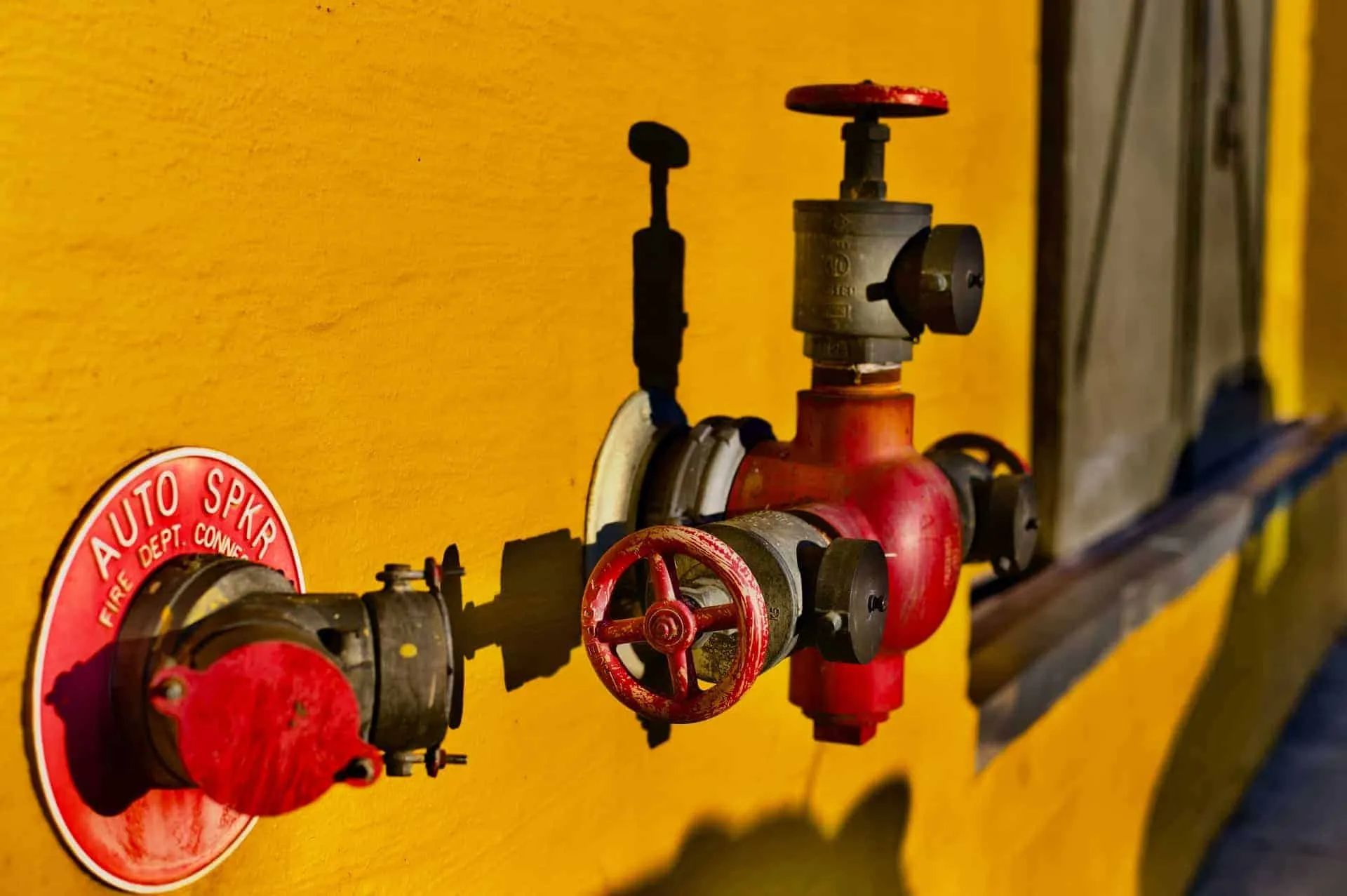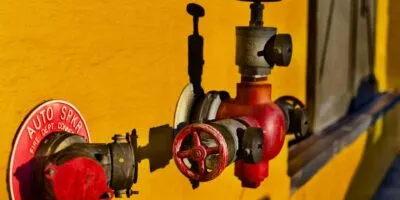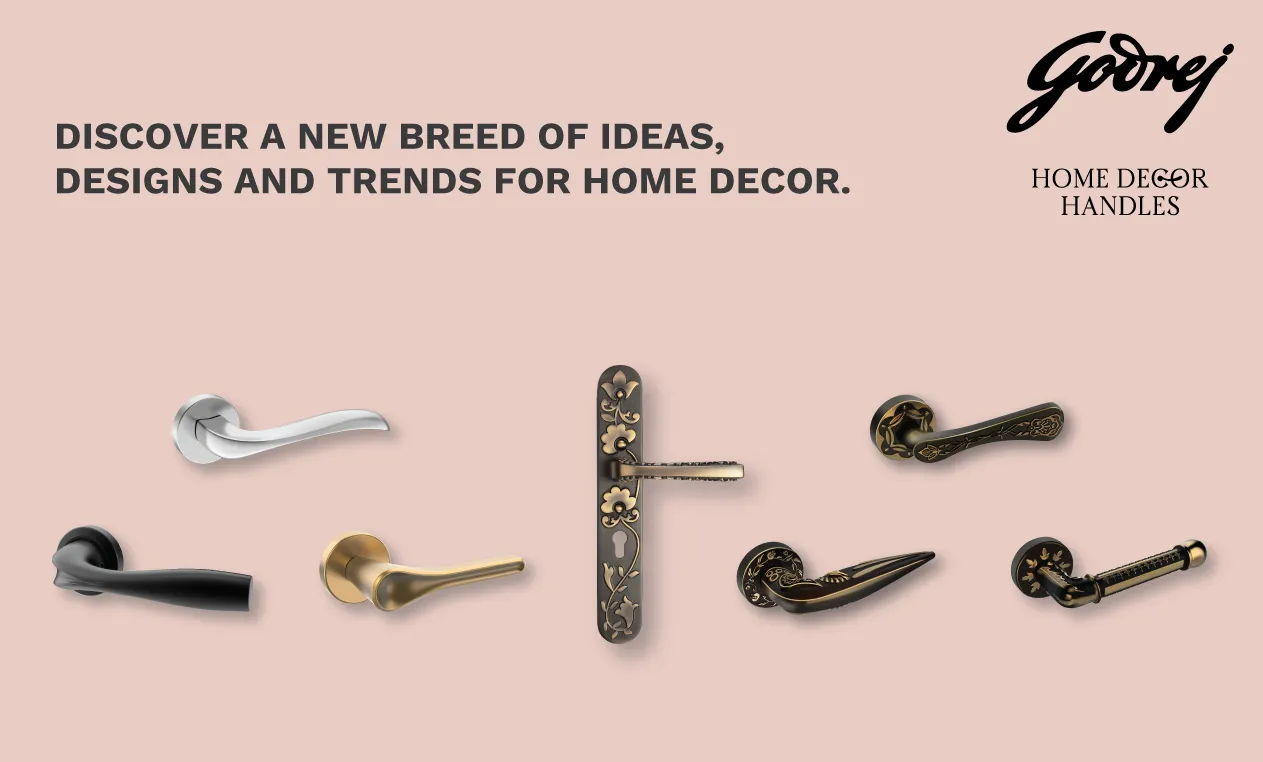A well-designed piping system needs different types of valves and pipe fittings. They synchronize the flow of fluid within the plumbing system. One can either operate them manually or with the help of an actuator that modifies and controls the opening. Depending upon the operations, valves are of different types- gate, globe, check, ball, butterfly, etc.
Since valves contribute to a considerable percentage of a predominantly successful piping system, it remains important for builders, engineers, architects, and other professionals to select them carefully.
It remains vital that the professionals have the knowledge of all types of valves and the dawn of any new designs. Thorough knowledge of the operation, classification, and functions of valves are equally important since the success of the piping system is entirely dependent on it.
We have put together this guide to help you narrow down your search and provide insights on the basics of valves along with their types and classifications.
Contents
Meaning of valves
These mechanical gadgets regulate the flow and pressure of a fluid within a piping system. Just like pipe fittings, these are also an essential component of a piping system. These direct and control the flow of liquids, gases, vapors, slurries, etc. from one point to another, shut off water access, and adjust the pressure within a system.
Installed in all types of piping systems, valves remain responsible for performing the following functions:-
- Isolation of fluid when required
- Regulation of water or fluid
- Non-return or prevention of fluid backflow
- Special purpose like regulation as well as isolation of fluid flow
These pipe fittings find their usage all around the entire household and industrial plumbing sector. Employed to alter the flow of water, regulate the flow, prevent backflow, or block out the flow in case of an emergency, these are a key element of any efficient piping system. These devices are available in a huge variety of styles, each of which has a distinctive design and serves a specific purpose.
Depending on your intended usage, the material remains an important aspect in ensuring safe operation. Also, different materials have different properties, and choosing the right one results in reducing maintenance and replacement costs over the useful life of a valve.
| Also see: With sensor-controlled fittings, Schell is promoting sustainable plumbing in India: Ms. Andrea Bussmann |
Functions of valves
Although each distinct type performs a particular purpose, there are many functions that remain common. Some of the most important functions are as follows:-
- It stops and starts a fluid flow. Depending on whether it is open or closed, it allows the fluid to flow or halts it.
- Some of these let you throttle the fluid depending upon the open percentage of the total opening. Lesser the opening, the higher the throttling, and vice-versa.
- It also controls the direction of fluid flow. The multiport device lets you decide the way of the fluid.
- Some of these possess automatic control to maintain the flow and pressure within the system by adjusting, opening, and closing. They are responsible for regulating the flow or pressure within the piping system.
- Pressure and vacuum relief fittings safeguard the system from overpressure and during vacuum conditions by relieving pressure or vacuum from the piping system and equipment.
Classification of valves
On the basis of function
On/off
These are also popularly known as block or shut-off valves. As the name suggests, it starts or stops the fluid flow. It basically imitates an electrical switch but for fluids. It is a device that allows unrestricted flow or prohibits it altogether.
Mostly manually operated, these particular devices use actuators for automation. These typically find usage in areas where an immediate need arises to stop the flow including safety management systems in case of emergencies.
Non-return
It permits the fluid flow in one particular direction only. It restricts the flow in the opposite direction.
These pipe fittings remain employed in a piping system to prevent any type of fluid backflow which would, in turn, damage the system. In addition, we mostly use them in pumps and compressors when they are shut down. These are also used in process systems having varying pressures.
We know these by different names, including reflux, retention, foot, and one-way valves.
| Also see: Pipe: A detailed technical guide for a sound plumbing system |
Throttling body
A throttling body is used to manage the flow, temperature, or pressure of the fluid. These can move to full-open and full-closed positions and hold that position. Therefore, they have the capability to perform the on/off function as well.
These have in-built actuators that provide automatic control. Certain throttle bodies are also designed with a hand-operated manual handwheel actuator. However, manually operated throttling bodies are not as accurate as the ones equipped with an actuator.
On the basis of application or service
General service
It is ideally designed keeping in mind the non-severe flow of fluids. These usually find their applications in places that have low to moderate pressure and temperature ratings. The optimal pressure rating shall be between class 150 to 600 and temperature rating between -50 to 350 degrees Celsius.
Commonly made out of carbon steel or stainless steel, these have a flexible design that allows them to be used in a wider range of applications.
| Also see: SCHELL is India’s most affordable German plumbing brand: Mr. C. V. Dilipkumar |
Special service
It is customized for a single application. It is an engineered product designed to function under specific conditions and parameters suiting a particular project.
Moreover, these withstand very high temperatures, high pressure, and a corrosive medium.
Severe service
It is nothing but a special service fitting having unique attributes. These can handle extremely severe process applications, like high-pressure drops resulting in severe cavitation, flashing, choked flow, or high noise levels.
Along with the highly engineered body, these have controllable actuators for automatic operations.
On the basis of motion

Image Source: hardhatengineer.com
Linear motion
These are designed with a closure element that moves in a straight line. It further regulates the fluid flow by starting, stopping, or throttling it.
The closure device or actuator used in a linear motion valve can either be a disc or any flexible material. Although slower in operations, these showcase a higher level of accuracy and stability.
These are fairly easy to maintain and are available in various sizes, pressure classes, and design alternatives. Although more expensive, these are more resistant to cavitation as compared to rotary valves.
Rotary motion
It uses a closure element that rotates through a quarter turn to open or close the flow. Rotary devices are usually smaller in size and weigh less than linear motion devices.
It should be noted that rotary devices and fittings are limited to certain pressure drops and are known to have cavitation and flashing problems. However, as technology continues to advance, these problems are becoming less common.
On the basis of port size
Full port
It refers to the bore of the valve having no restrictions in the piping.
It has a closure element that allows the fluid to flow freely and does not restrict the flow at all. This is possible because the internal flow passageways are large enough to pass the flow without any significant restriction.
Reduced port
A reduced port or a standard port fitting causes a restriction in the flow.
It has a closure element that restricts the flow. The flow area, in this case, is less than the inside diameter of the pipeline. This restriction allows the device to take a pressure drop as flow moves through the closure element, allowing a partial pressure recovery.
On the basis of actuator
Manual
These are operated manually and use handwheels, levers, chains, or gear wheels as actuators.
Actuated
These actuators remain connected to an external power source like an electric motor, air/pneumatic system, hydraulic system, or solenoid that allows operations from the control room.
Automatic
These activate when the system fulfills a specific flow condition. These actuators usually prevent backflow or over-pressure of the system.
Types of valves
Different types of pipe fittings have several models, each with distinct characteristics and functional capacities. Some are self-operated while others use an actuator.
Therefore, depending upon the operations, these are the following types:-
Ball valve
Ordinarily, a ball valve offers maximum longevity among all valve types. It is a rotary motion valve using the quarter-turn technique. Not prone to leakage or any kind of failure, ball valves utilize a ball-shaped disc to start or stop the fluid flow.
The majority of the ball valves are quick in operations, low maintenance, and compactly designed. Offering greater reliability, ball valves are smaller and lighter as compared to a gate valve of the same size.
These, certainly, are considered the most popular valve due to their extensive range of applications and ease of operations. However, these should only be used to open and close fluid passages. They are not suitable for throttling fluid flow.
A ball valve can withstand high pressure without being damaged. Unlike other valves, these valves do not need lubrication or replacement used in the right manner.
Commonly used in residential and industrial applications, a ball valve is of the following types:-
- 3-way ball valve
- Floating ball valve
- Trunnion mounted ball valve
- Top entry ball valve
- Side entry or split body ball valve
- Three-piece body ball valve
Butterfly valve
A butterfly valve is used to isolate and regulate fluid flow. Butterfly is yet another popular shut-off valve with a quarter-turn rotary motion. A butterfly valve has a rotating disc at the center of its short circular body.
Having a compact and lightweight design, a butterfly valve is used to stop, control, and start the flow. Butterfly valve is considered suitable for large applications and to throttle fluids.
However, throttling fluids using butterfly valves for extended periods of time is not advisable. This is because continuous exposure to running water can potentially erode the disc and weaken the watertight seal of the butterfly valve.
Mostly found in household plumbing and industrial plumbing, butterfly valve is manually operated and takes up minimal space. Also, a butterfly valve costs lesser than other fitting serving a similar purpose.
The most common types of butterfly valves include:-
- Flanged ends
- Wafer ends
- Lug ends
- Butt-welded
- Zero offset
- Double offset
- Triple offset
Gate valve
A gate valve, the most common type, possesses a linear motion. These are used to start or shut off fluid flow when in a fully closed or fully open position.
It consists of a gate-like disc that is actuated by a handwheel actuator. In the closed position, the disc is responsible for shutting off the flow.
Gate valves are used in almost all types of fluid applications and provide good and tight shutoff. Widely used in wastewater plants, food processing facilities, and process plants, gate valves are not suitable for throttling service.
Moreover, these are furnished with a wedge-shaped metal gate (actuator) that can halt or allow the fluid to flow by lowering or raising it.
However, gate valves definitely last in the long run only if not used frequently. For applications where there is a need to on/off regularly, a ball or butterfly valve is a much-preferred choice.
These are of the following types:-
- Solid wedge gate valve
- Flexible wedge gate valve
- Parallel disks or split wedge gate valve
- Rising stem gate valve
- Insider screw gate valve
Globe valve
It is employed to stop, start, and manipulate the flow of the fluid. As the name suggests, it has a spherical body. Since it provides better shut-off, it is used in systems where leak tightness is a major requirement.
Unlike a ball and gate valve, it is designed to regulate and throttle fluid flow. However, when dealing with low pressure, these tend to leak.
These devices cost more than any other type and available in three types, namely:-
- Z types
- Y types
- Angle types
Check valve
A check valve ensures that the fluid flows only in one direction in the piping system. It is responsible for backflow prevention. This type of valve uses a pressure-controlled disc for this purpose.
Moreover, it is ideal for application in high-pressure units. Regardless of any fluctuations in pressure or backflow of fluids, these permit access of fluid in a particular direction only.
It uses a ball or piston supported by a spring. This spring opens under specified pressure conditions. In case of multiple gases are mixed into one stream, it prevents the mixing of the gases in the original source.
Moreover, it is capable of functioning without any manual assistance. They are fully automatic and work without any electricity/power aid. Hence, this device will continue to prevent backflow without any interference in the event of an electrical failure as well.
A check valve is mainly of four main types, namely:-
- Swing type
- Lift type
- Dual-plate type
- Stop check
Plug valve
A plug valve- is a cylindrical valve used to isolate or change the direction of the flow. It consists of a cone-shaped “plug” that rotates when one turns the handle resulting in the diversion of flow across multiple channels.
Just like an on/off valve, a plug valve ensures a tight shutoff of fluid. This type of valve remains ideal for high-pressure and temperature applications. Having a self-cleaning mechanism, these valves make used in a vacuum as well.
We use a plug valve mostly in gas supply lines, low-pressure steam lines, water treatment plants, pulp, paper, and chemical industries.
Following are the types of plug valves:-
- Rectangular port
- Round port
- Diamond port
- Lubricated plug valve
- Non-lubricated plug valve
- Multi-Port plug valve
Needle valve
A needle valve comprises a sharp needle-like disc controlled by a rotating stem. Used to isolate, regulate, and throttle fluids, a globe valve, and a needle valve are designed in a similar manner. This type of valve works best in a small diameter piping system having precise control over the flow.
A needle valve widely used for continuous blow-off services. Typically, these valves have a seat diameter fairly smaller than the size of the pipe.
These find their applications where we need to adjust or carefully measure the flow to protect the equipment.
Pinch valve
Also known as a clamp, a pinch valve is a linear motion device. These are used to start, control, and stop fluid flow using actuators. For this purpose, it uses a rubber tube, also called a pinch tube, and a pinch mechanism.
It is ideal for application in systems that convey solid material pneumatically. In addition, these are an excellent option for application areas prone to corrosion and metal contamination of fluids.
However, a pinch valve is not suitable for high temperature and pressure applications as well as in gas medium.
Pressure relief valve
Pressure relief or the pressure safety valve, is used to protect the equipment or the piping system. In case of overpressure or vacuum, it releases it.
Offering improved safety standards, these use spring-automated actuators. These can potentially return a system to the desired pressure in event of over-pressure in the piping system.
These are of the following types:-
- Reclosing-type pressure relief devices
- Non-reclosing type pressure relief devices
- Safety relief
- Pressure relief
- Vacuum relief
- Pressure vacuum relief
Valve end connections
An end connection that matches your piping is the key element. Each valve end has some unique properties in addition to the general ones. These properties make a particular valve the best-suited one for your requirements another.
We use countless types of end connections for the installation of a valve.
In general, all terminal connections serve the same purpose. However, selecting the wrong valve end connection affects your productivity and compromises workplace safety.
Finding the best end connection for your pipes is based on several factors, such as:-
- Pressure rating
- Leakage prevention
- Ease of installation
- Ease of removal for repair or replacement
- Valve integrity and durability
- Adherence to industry standards
- Weight and size
- Cost
Find a quick overview of the most commonly used end connections below:-
Threaded or screwed
- Used in instrument connections or sample points
- Provide a tight and streamlined connection
- Easy and quick to assemble
- Mostly used in low-pressure piping systems
- Available in straight threads and tapered threads

Image Source: assuredautomation.com

Image Source: assuredautomation.com
Flanged
- Easy to install and uninstall
- Very common in piping systems
- Ideal for a valve that requires regular changing or substitution
- Compatible with various types of valves
- Secured with multiple bolts and therefore, require less tightening torque than threaded end connections

Image Source: assuredautomation.com
Butt welded
- Highly durable
- Provide secure connections for pipelines with high pressure and temperature ratings
- Designed to match the thickness of a particular pipe
- The pipe end and valve end have equal diameters
- The two ends are welded after being butted to the pipeline

Image Source: assuredautomation.com
Socket welded
- Used on small-bore piping with no threaded connections
- Provide long-term and leak-proof connections
- Suitable for pipelines that handle high pressure and temperature
- The socket’s inner diameter is slightly larger than the pipe’s outer diameter
- Suitable for smaller sizes, typically 2” and below
- Also referred to as “weld-in place”

Image Source: assuredautomation.com
Common valve materials
The main components make use of various materials considering their strength and resistance to corrosion, extreme temperatures, and wear in the long run.
The most common materials used in water applications are as follows:-
Ductile iron valves
- Has a slightly higher pressure tolerance than cast iron
- Excellent machinability
- Possesses the toughness and strength of cast iron
- Usually used in steam, gas, water, and oil pipeline systems
- Cost-effective material
- Readily absorbs shock
- Offers poor corrosion resistance
Brass valves
- Comparatively low in cost than bronze valves
- Better corrosion resistance than ductile iron
- Ideal for low-pressure applications
- Offers high machinability
- Used in smaller sized valves
Stainless steel valves
- Has excellent corrosion resistance
- Highly durable and ensure long-lasting service
- Holds up against harsh water very efficiently
- Most commonly used in the petrochemical industry and general plant systems
- Comparatively expensive than cast iron, bronze, and brass valves
- Heat resistant
- Available in two grades- 304 and 316, the latter grade being superior in quality
Grey cast iron valves
- Highly durable material
- Mainly used in low temperature and pressure service applications
- Has a graphite coating
- Highly resistant to corrosion
- Used for clean liquids and gases
Bronze valves
- Suitable for moderately corrosive solutions like salt water, seawater, etc.
- Aluminum bronze and nickel bronze are better options than tin bronze
- Nickel bronze is appropriate for high-pressure applications
- Ideal for complex castings
- Possesses good wear resistance and machinability
- Suitable for low to medium pressure services
Carbon steel valves
- Tough, hard, and strong material with high impact value
- For hot and cold water applications
- For non-corrosive clean liquids and gases
- Has excellent tensile strength
- Suitable for high temperature and pressure applications
Conclusion
A valve controls or directs the flow of a fluid by opening, closing, or partially blocking fluid flow. Regardless of being a type of pipe fitting, it is considered to be an individual and distinctive category.
Each one serves a unique purpose, has special features, and offers a wide variety of styles designed to meet specific plumbing requirements. In addition, these use different materials, including carbon steel, stainless steel, ductile iron, brass, bronze, etc.
Designed to handle liquids as well as gases, these are classified on the basis of their functions, applications, actuators, and other design parameters. However, one confusing facet of classification is that one particular variant might fall under more than one category. Therefore, it is important for professionals to carefully equate a particular variant with a particular classification.
Selecting the right fittings for your next project might seem complicated and intimidating. However, by starting with the general characteristics included in this article, you can easily narrow them down to the best fit for your requirements.
It is noteworthy to know the most appropriate type of end connection to best fit your application. This will ultimately result in maximizing efficiency and safety. Also, it is crucial to find the right valve based on several factors like pressure rating, ease of installation, weight, size, etc.
With all the information provided in this article, hope you will find a new perspective in analyzing and selecting the right valve for the right application.
|
If you want to buy top-quality plumbing fittings from the best brands, click on the link given below to check your options and submit your inquiries:
For more details, contact below: WhatsApp Number: +91-9967632127 (Only message; no calls) Email: support@buildingandinteriors.com |











